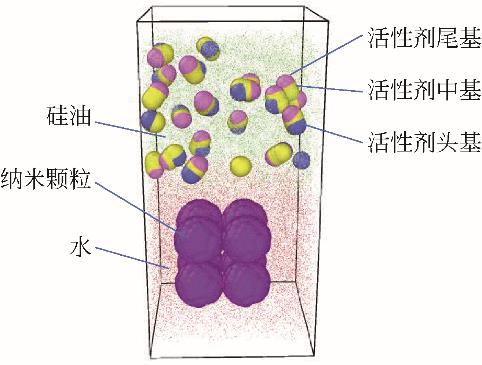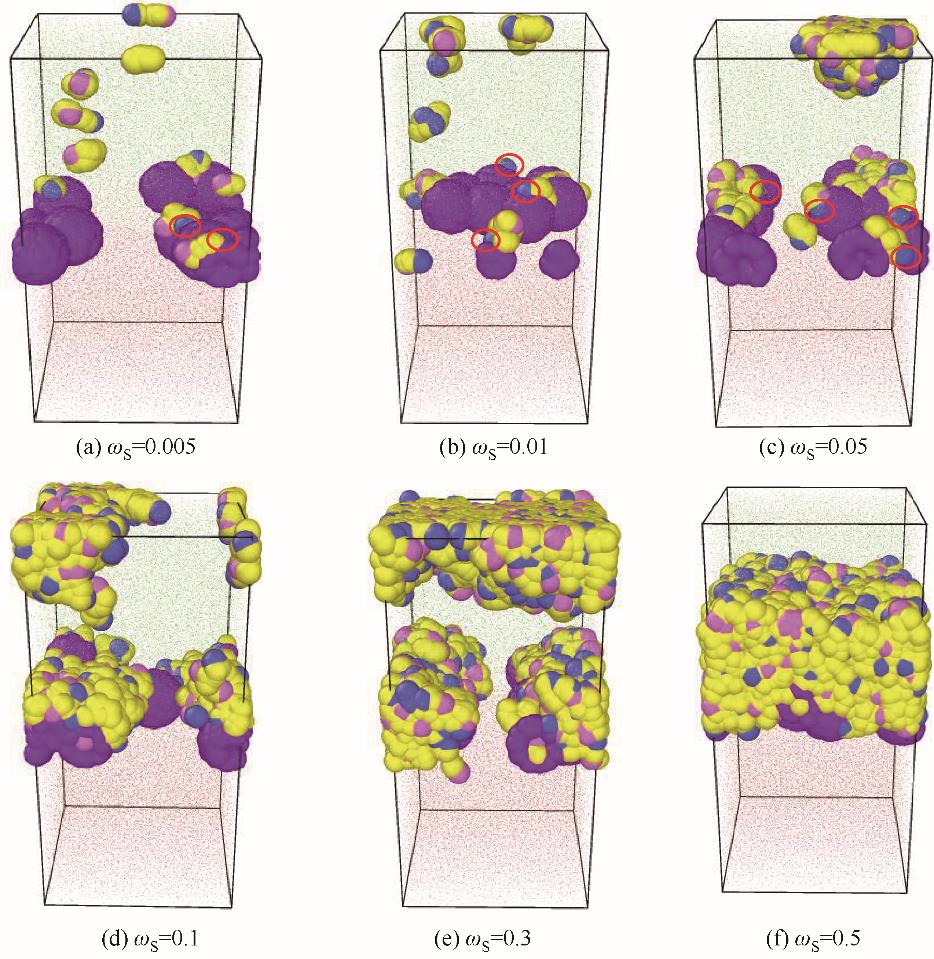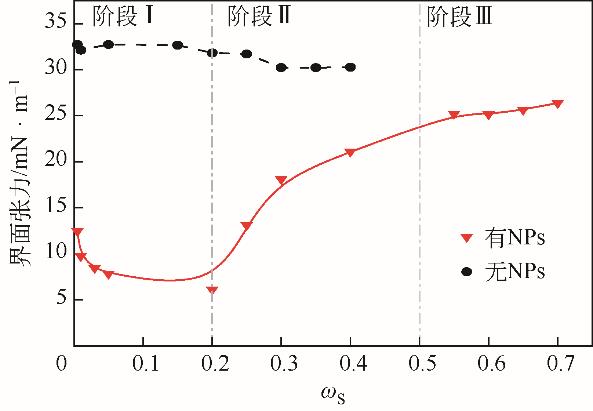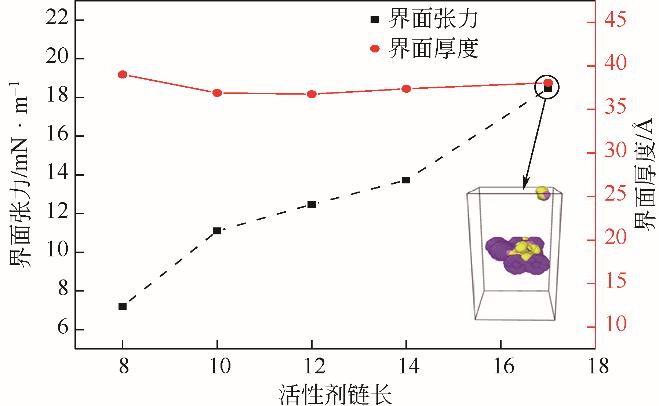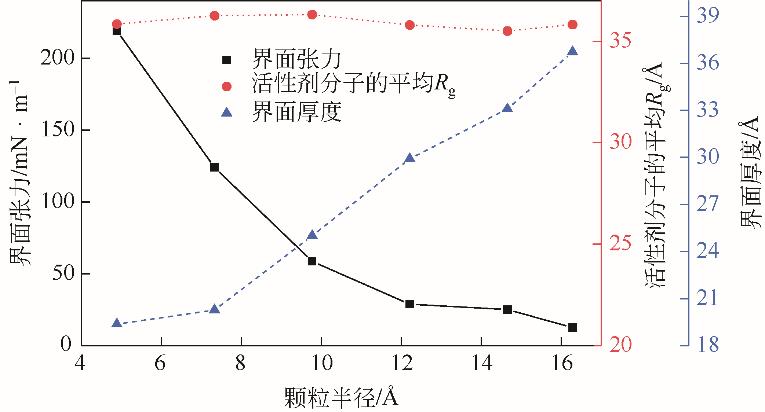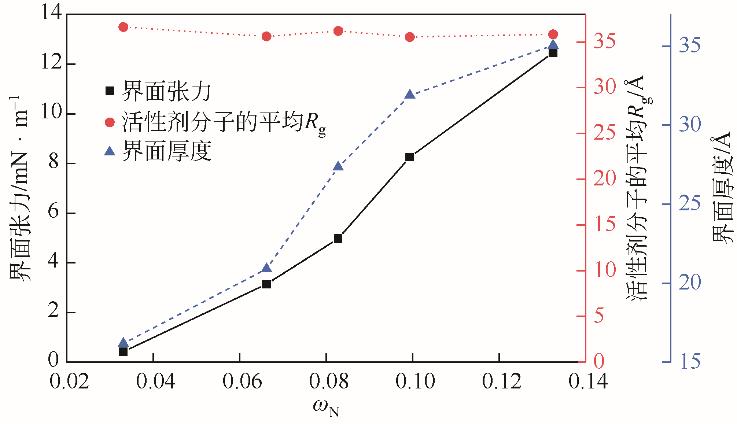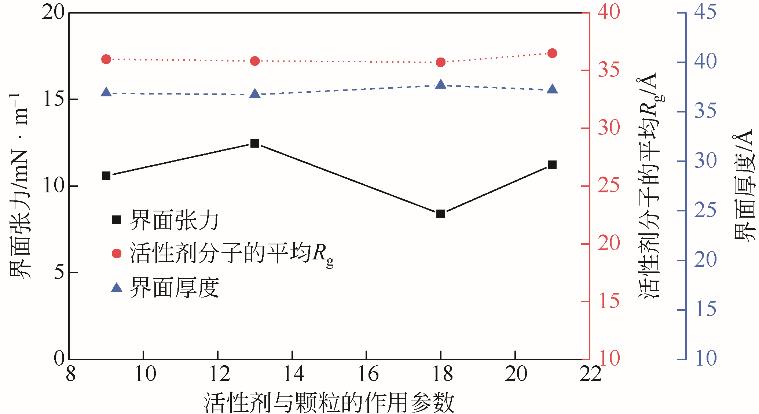| 1 |
CHAI Y, LUKITO A, JIANG Y F, et al. Fine-tuning nanoparticle packing at water–oil interfaces using ionic strength[J]. Nano Letters, 2017, 17(10): 6453-6457.
|
| 2 |
TOOR A, FORTH J, BOCHNER D A S, et al. Mechanical properties of solidifying assemblies of nanoparticle surfactants at the oil-water interface[J]. Langmuir, 2019, 35(41): 13340-13350.
|
| 3 |
HUANG C, SUN Z, CUI M, et al. Structured liquids with pH-triggered reconfigurability[J]. Advanced Materials, 2016, 28(31): 6612-6618.
|
| 4 |
ALASIRI H S, SULTAN A S, CHAPMAN W G. Effect of surfactant headgroup, salts, and temperature on interfacial properties: dissipative particle dynamics and experiment for the water/octane/surfactant system[J]. Energy & Fuels, 2019, 33(7): 6678-6688.
|
| 5 |
戴姗姗, 寇子敏, 刘艳, 等. SiO2/聚丙烯酰胺核壳结构复合材料的分子动力学模拟[J]. 化工进展, 2018, 37(9): 3547-3554.
|
|
DAI S S, KOU Z M, LIU Y, et al. Molecular dynamics simulation of SiO2/PAM composites with a core-shell structure[J]. Chemical Industry and Engineering Progress, 2018, 37(9): 3547-3554.
|
| 6 |
孔令云, 全秀洁, 李朝波, 等. 乳化剂在集料化学成分表面吸附行为的分子模拟与试验论证[J]. 化工进展, 2020, 39(8): 3196-3204.
|
|
KONG L Y, QUAN X J, LI C B, et al. Molecular simulation and experimental demonstration of adsorption behavior of emulsifier on surface of chemical composition of aggregate[J]. Chemical Industry and Engineering Progress, 2020, 39(8): 3196-3204.
|
| 7 |
RANATUNGA R U, NGUYEN C T, WILSON B A, et al. Molecular dynamics study of nanoparticles and non-ionic surfactant at an oil-water interface[J]. Soft Matter, 2011, 7(15): 6942-6952.
|
| 8 |
LUO M X, DAI L L. Molecular dynamics simulations of surfactant and nanoparticle self-assembly at liquid–liquid interfaces[J]. Journal of Physics: Condensed Matter, 2007, 19(37): 375109-375124.
|
| 9 |
HOOGERBRUGGE P J, KOELMAN J. Simulating microscopic hydrodynamic phenomena with dissipative particle dynamics[J]. EPL (Europhysics Letters), 1992, 19(3): 155-160.
|
| 10 |
GROOT R D, WARREN P B. Dissipative particle dynamics: bridging the gap between atomistic and mesoscopic simulation[J]. The Journal of Chemical Physics, 1997, 107(11): 4423-4435.
|
| 11 |
GROOT R D. Mesoscopic simulation of polymer-surfactant aggregation[J]. Langmuir, 2000, 16(19): 7493-7502.
|
| 12 |
MÜLLER M, STEINMÜLLER B, DAOULAS K C, et al. Polymer–solid contacts described by soft, coarse-grained models[J]. Physical Chemistry Chemical Physics, 2011, 13(22): 10491-10502.
|
| 13 |
FIELD M J, BASH P A, KARPLUS M. A combined quantum mechanical and molecular mechanical potential for molecular dynamics simulations[J]. Journal of Computational Chemistry, 1990, 11(6): 700-733.
|
| 14 |
DONG F L, LI Y, ZHANG P. Mesoscopic simulation study on the orientation of surfactants adsorbed at the liquid/quid interface[J]. Chemical Physics Letters, 2004, 399(1): 215-219.
|
| 15 |
CALVARESI M, DALLAVALLE M, ZERBETTO F. Wrapping nanotubes with micelles, hemimicelles, and cylindrical micelles[J]. Small, 2009, 5(19): 2191-2198.
|
| 16 |
YUAN S L, CAI Z T, XU G Y, et al. Mesoscopic simulation study on phase diagram of the system oil/water/aerosol OT[J]. Chemical Physics Letters, 2002, 365(3/4): 347-353.
|
| 17 |
李亚娉. 表面活性剂界面行为和构效关系研究[D]. 济南: 山东大学, 2014.
|
|
LI Y P. Interfacial behaviour and strucyure-function relationship of surfactants[D]. Jinan: Shandong University, 2014.
|
| 18 |
FLEISCHER C A, MORALES A R, KOBERSTEIN J T. Interfacial modification through end group complexation in polymer blends[J]. Macromolecules, 1994, 27(2): 379-385.
|
| 19 |
ROSEN M J, MURPHY D S. Effect of the nonaqueous phase on interfacial properties of surfactants. 2. Individual and mixed nonionic surfactants in hydrocarbon/water systems[J]. Langmuir, 1991, 7(11): 2630-2635.
|
| 20 |
FLEISCHER C A, KOBERSTEIN J T, KRUKONIS V, et al. The effect of end groups on thermodynamics of immiscible polymer blends. 1. Interfacial tension[J]. Macromolecules, 1993, 26(16): 4172-4178.
|
| 21 |
VU T V, PAPAVASSILIOU D V. Oil-water interfaces with surfactants: a systematic approach to determine coarse-grained model parameters[J]. The Journal of Chemical Physics, 2018, 148(20): 204704-204716.
|
| 22 |
陈小榆, 李原, 谢欣彤, 等. Al2O3纳米颗粒与表面活性剂对O/W乳状液稳定性的影响[J]. 油田化学, 2017, 34(4): 675-679.
|
|
CHEN X Y, LI Y, XIE X T, et al. Effect of alumina nanoparticle and surfactant on the stability of O/W emulsion [J]. Oilfield Chemistry, 2017, 34(4): 675-679.
|
| 23 |
GOODARZI F, ZENDEHBOUDI S. Effects of salt and surfactant on interfacial characteristics of water/oil systems: molecular dynamic simulations and dissipative particle dynamics[J]. Industrial & Engineering Chemistry Research, 2019, 58(20): 8817-8834.
|
| 24 |
JANG S S, LIN S T, MAITI Prabal K, et al. Molecular dynamics study of a surfactant-mediated decane-water interface: effect of molecular architecture of alkyl benzene sulfonate[J]. The Journal of Physical Chemistry B, 2004, 108(32): 12130-12140.
|
| 25 |
高斯萌, 夏坤, 康志红, 等. “拟双子” 阴离子表面活性剂在癸烷/水界面的分子动力学模拟[J]. 化学学报, 2020, 78(2): 155-160.
|
|
GAO S M, XIA K, KANG Z H, et al. Molecular dynamics simulation of “quasi-gemini” anionic surfactant at the decane/water interface[J]. Acta Chimica Sinica, 2020, 78(2): 155-160.
|
| 26 |
ZHANG S H, HAN X Y, TAN Y, et al. Effects of hydrophilicity/lipophilicity of nano-TiO2 on surface tension of TiO2-water nanofluids[J]. Chemical Physics Letters, 2018, 691: 135-140.
|
| 27 |
瞿舟. 表面活性剂分子油水界面性质的分子动力学模拟研究[D]. 湘潭: 湘潭大学, 2018.
|
|
QU Z. The interfacial activities of surfactants at oil/water interface: molecular dynamics simulations[D]. Xiangtan: Xiangtan University, 2018.
|
 ), YE Xuemin, LI Chunxi(
), YE Xuemin, LI Chunxi( )
)




